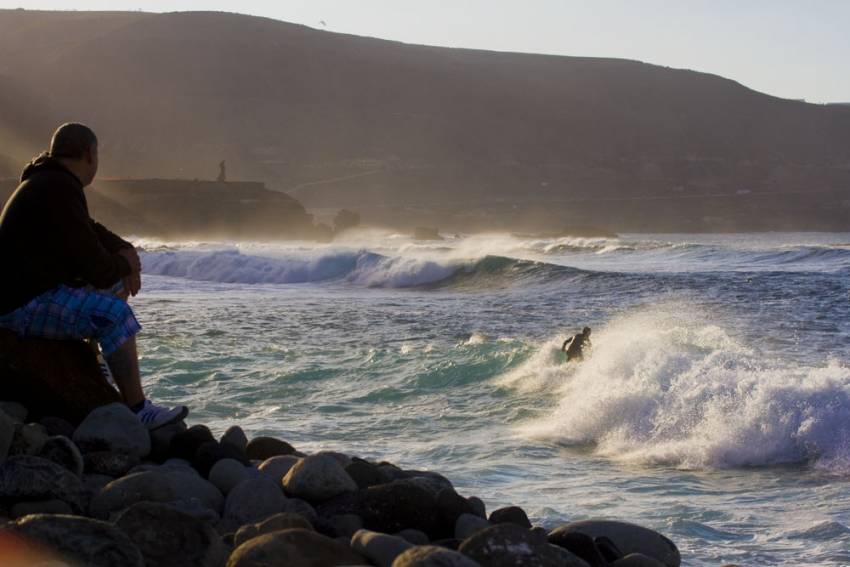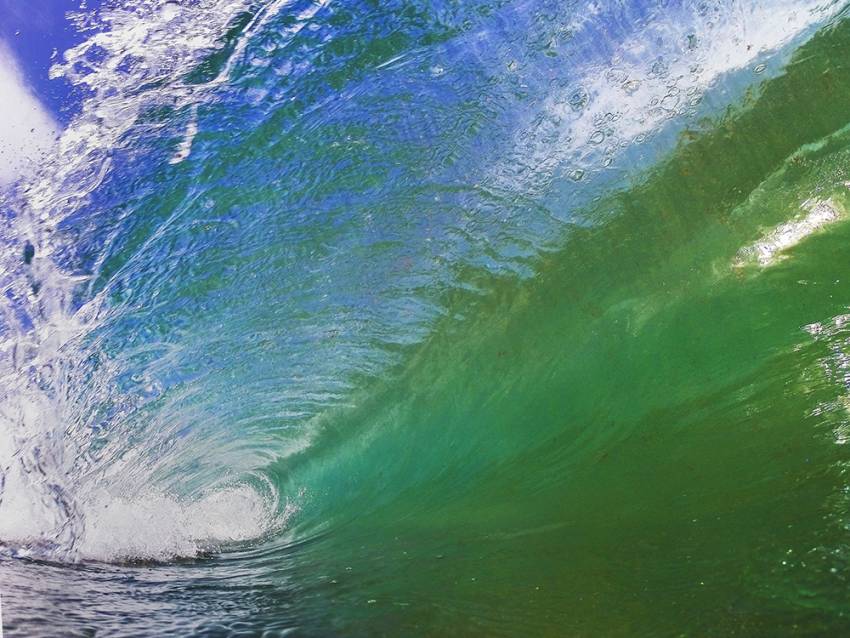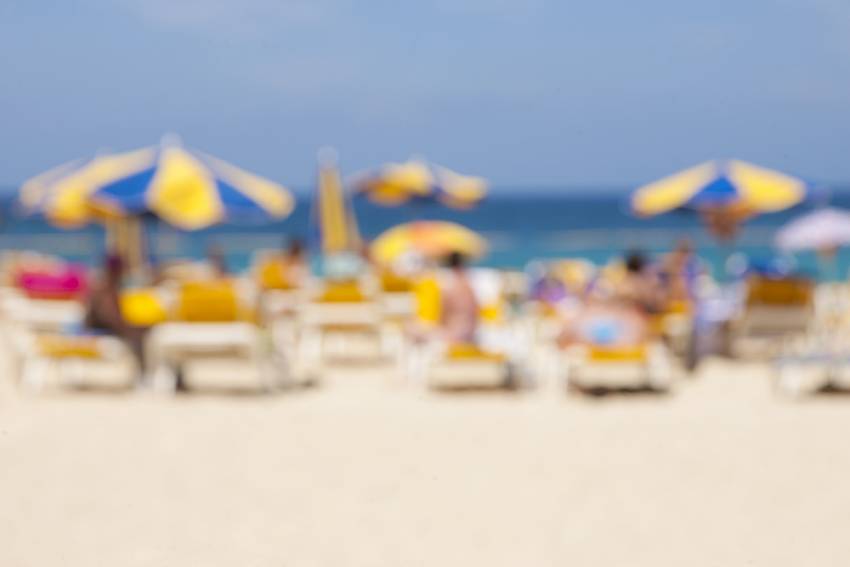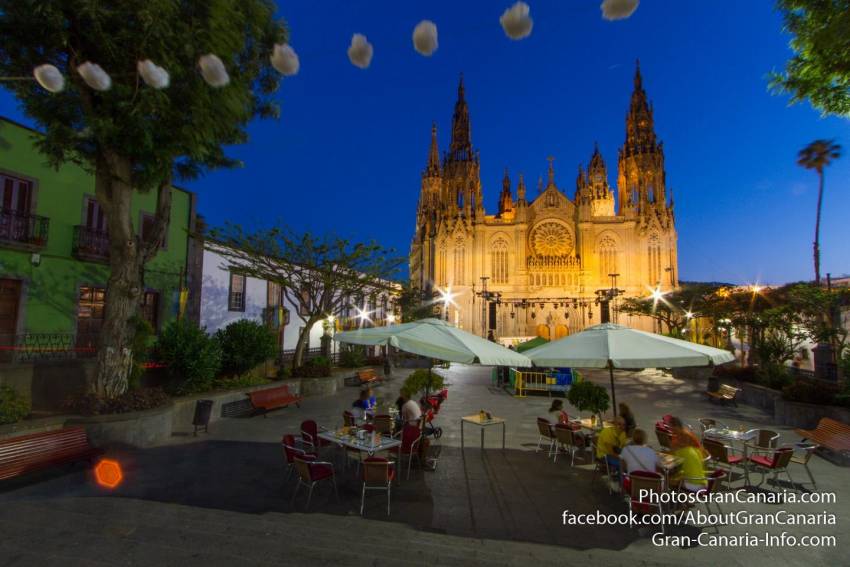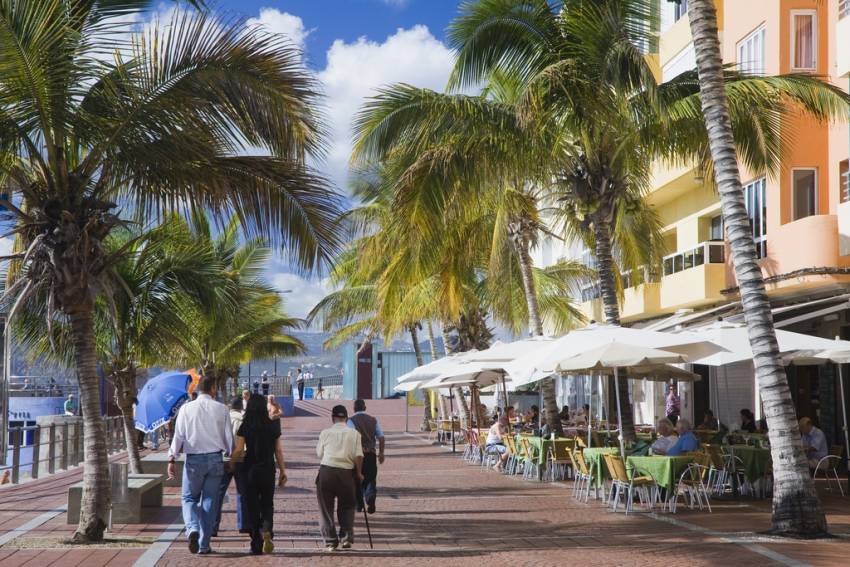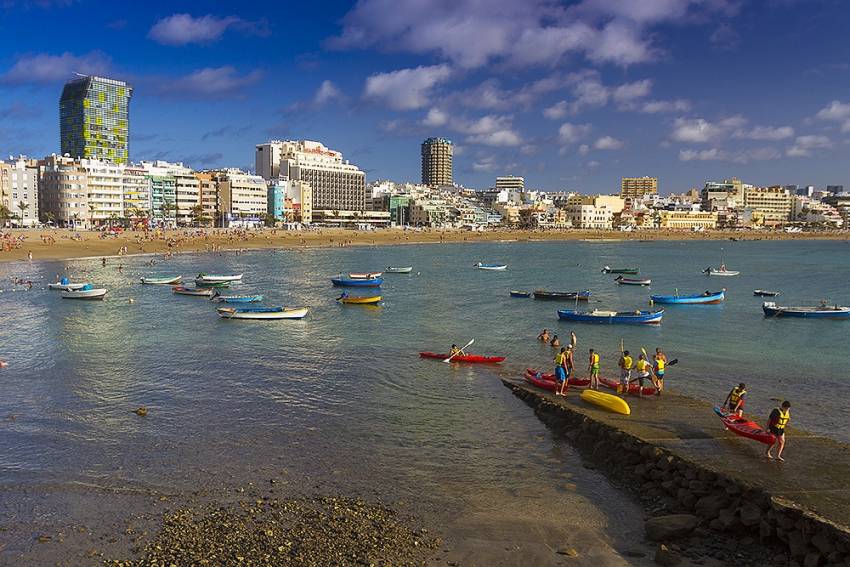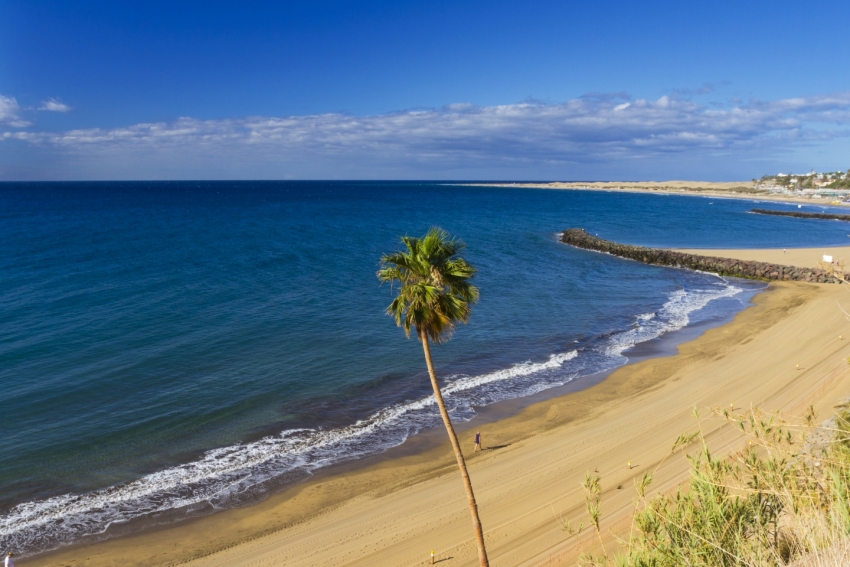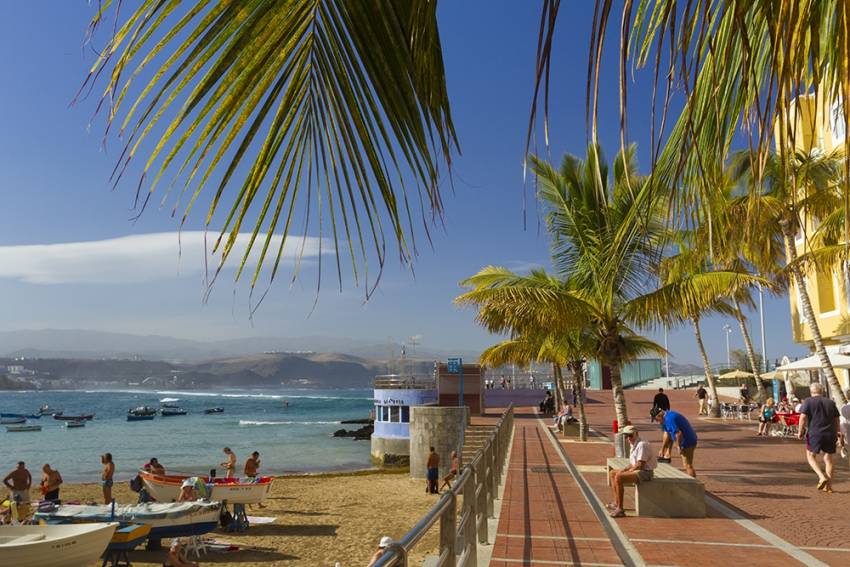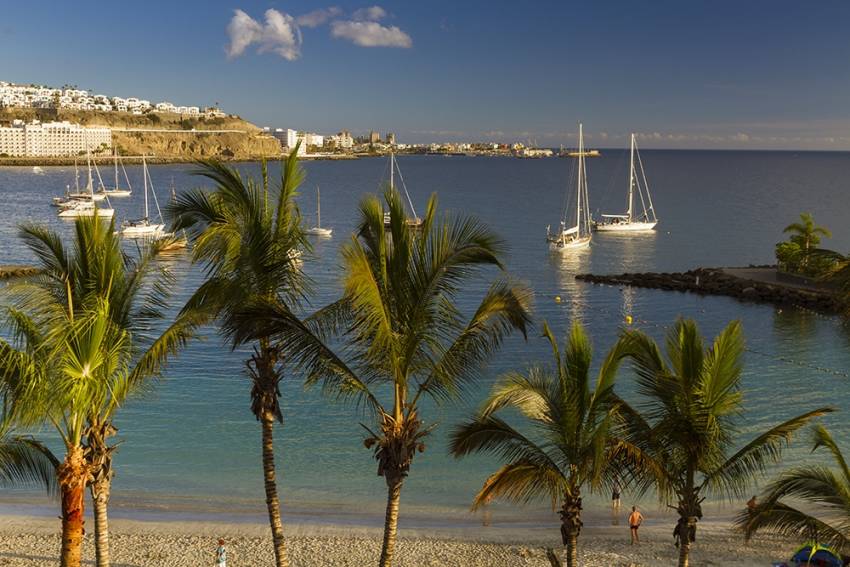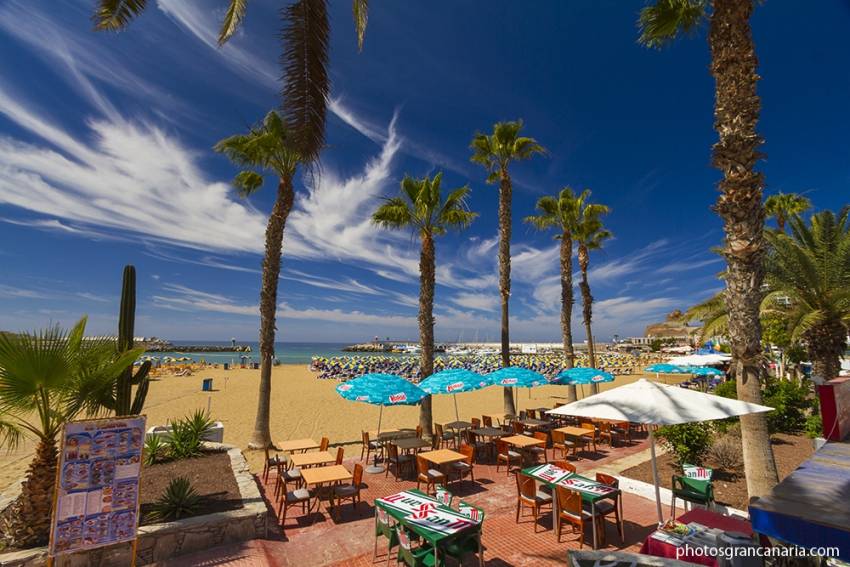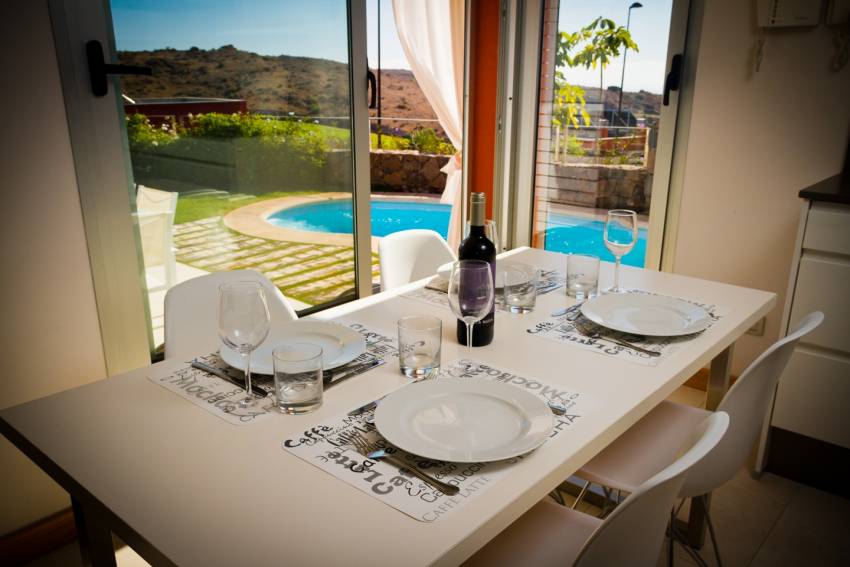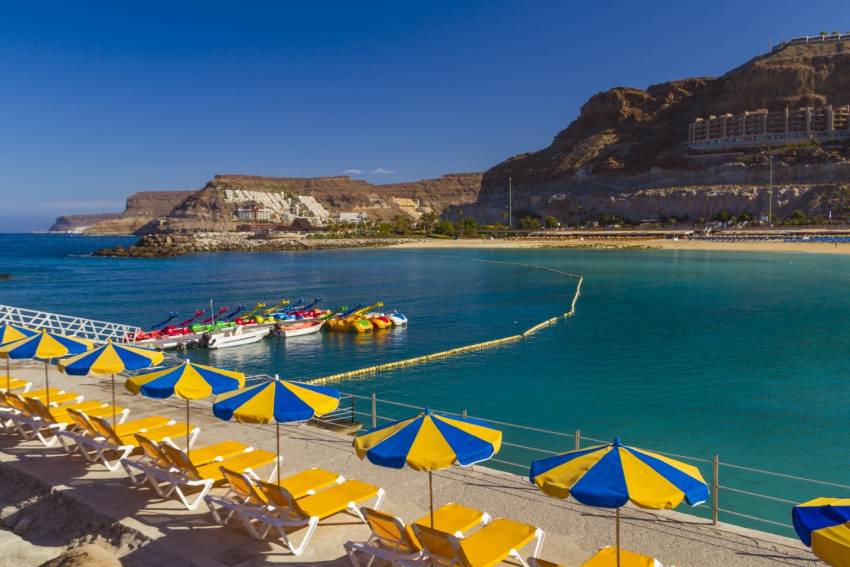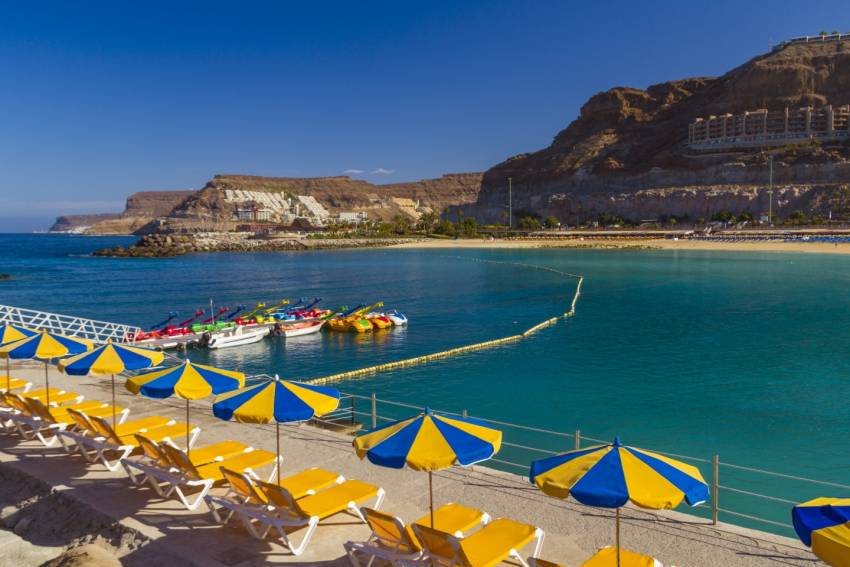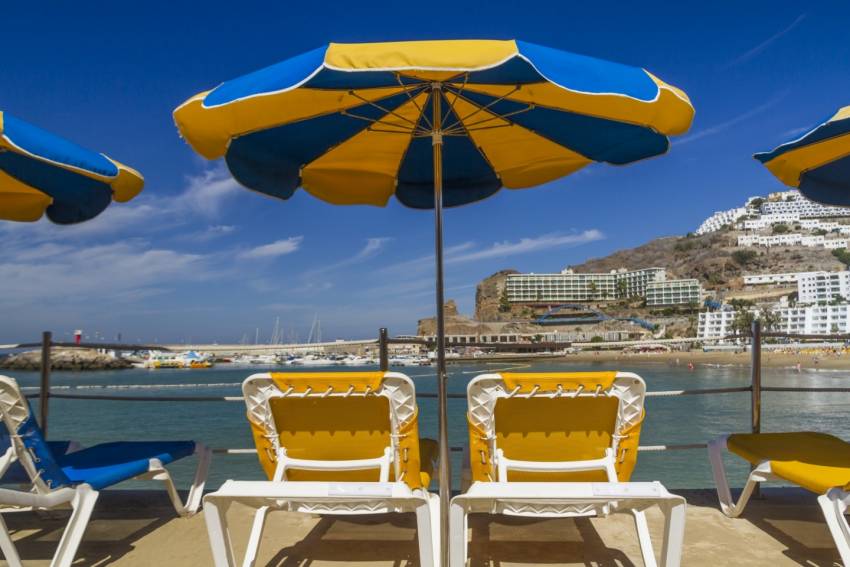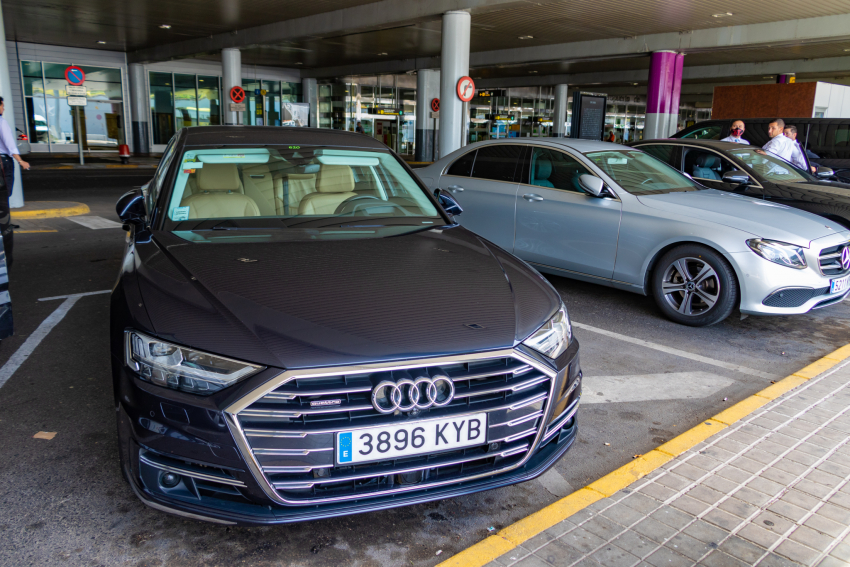Gran Canaria Surfing: El Lloret
A great wave for proficient shortboarders but not for bodyboarders or beginners: Get El Lloret wrong and you end up on the rocks.
Gran Canaria Surfing: The La Cicer Break
La Cicer isn't the best surf area in Gran Canaria, or even in the capital Las Palmas, but it is the most popular as it's where most of the island's surf schools take their groms.
Style Guide: How to write appallingly about Gran Canaria (or anywhere else)
We read dozens of articles about Gran Canaria every week. Most of the time it hurts. In fact, you've got more chance of finding an original piece about the island as you do of finding a Canarian in the Puerto Rico Shopping Centre.
Enough is enough.
We've decided to kill the cliché and murder the tired metaphor so we've put our heads together and set the bar high:
Here's our style-guide for Gran Canaria Info articles.
By the way, if we break our own rules, please feel free to shout at us.
The essential clichés
No article can be published without one of the following insightful themes:
Starting with a pun on the island's roundness
Saying it's like Spain but different
Setting out to explore the other, real, Gran Canaria
Revealing that it's an island of contrasts
Mentioning the tourist bight, sprawl, plague, etc, within two sentences
Referring to Gran Canaria as la Isla Bonita (that's La Palma)
Discover Stuff: You're an explorer
To write in an original way you must discover a secret beach, explore a hidden valley or scale a rugged peak. Seeing the resorts and popular beaches with a fresh eye isn't worth considering. Do not under any circumstances focus on details but rather always try to cram the entire island into 400 words.
Do stay in a resort and explore the rest of the island in a day on a Jeep Safari. You'll see it all. In your article only mention the day out.
Scrape the surface: Make as little effort as possible to find anything interesting during your visit. If you must delve, delve into Google.
Unique and wonderful vocabulary
Go heavy on the word unique. Use it at least every sentence and don't both to explain why anything is unique: The readers already know. If you think you're using it too often just switch to 'perfect'.
Fascinating, gorgeous, wonderful, incredible, amazing, picture postcard perfect, etc are also perfectly viable alternatives. All other describing words are redundant.
Use the words traditional and sustainable at least once per article. It doesn’t matter where: Just get them in. Combined with “perfect example of” they get you double points.
The word nice is due for a revival: Use it often as it makes your prose incisive.
The word literally is free. Slap it on the page.
Use words like impart, integrated, intense: Any word that you don't use in everyday conversation makes you sound clever. Better still, combine several beginning with the same letter in one phrase: Alliteration is always fun.
Help us get the word amazeballs off the Twittersphere and into quality prose. The world needs it.
English is too short: Make sure you puff out your prose with lots of wills, woulds, shoulds, coulds, can.
The active voice is nasty. Passive is always the way to go.
Mince the metaphor, crunch the cliché
In the lively resorts, hotels perch, pools are situated, you hit the sun-drenched beaches along with hordes of tourists, cash is splashed, the Yumbo is nudge, nudge, wink,wink (insert funny joke).
Off the beaten track the mountains float in the air above you, remote villages nestle quaintly, views are panoramic and breathtaking, markets and fiestas are colourful and vibrant and full of friendly locals.
Food is always succulent, mouth-watering and delectable. You stumble upon charming local restaurants that are always hidden gems.
Facts get in the way
Facts are so yesterday. Only check yours by referencing other articles found on Google. Get at least one basic fact per article so wrong that it makes the reader's teeth grind. It makes your words memorable.
Locals, what locals
There are no local people in Gran Canaria except friendly ones dressed up in traditional costume dancing charmingly at authentic local fiestas. If you must mention a local in any other context, make sure it's a barman with a dodgy accent.
Narrate to irritate
Refer to yourself in the third person. It's what the queen does and if its good enough for German pensioners, then it's good enough for you.
You need a nickname. Pick one that nobody has ever called you for real authenticity.
Tell the reader all about yourself. They care more about you than about the destination. Include lots of personal details that are unrelated to the content. Blurry photos of your family get you noticd on social media.
Engage with the audience
Beg for likes on social media: People will admire your determination
Post a link repeatedly just in case somebody missed it the first 23 times.
Join a web ring, blog ring, book club or any other network dedicated to sharing each other's content. Promote your buddy's irrelevant content to your audience.
Change the title of your old stuff and repost it as new. Do this often and without warning.
Photos are essential: Include blurry, cloudy and downright terrible ones to boost your reach. If your camera is broken use one of the 10 free photos available on Flickr or Creative Commons. Or steal from the internet: Never credit the photographer.
Want to submit a guest post to Gran Canaria Info? Please use the above as a guide and include plenty of links to your online casino or Viagra shop. We'll definitely publish it on the front page.
Arucas: Bananas, Rum and a Giant Church
Arucas town is famous for its colossal Gothic church built with bug money (see below). Oh, its also got a rum distillery and one of the best preserved town centres on the island.
Las Palmas de Gran Canaria: Europe's Latino City
A city destination with miles of golden sand, bars serving local rum, a raucous month-long carnival and Christopher Columbus' house. The legendary Habana perhaps, or Colombia's exotic Cartagena de Indias? You might be surprised to find out that this exotic destination is much closer to home. Las Palmas, Europe’s secret Latino city, is just four hours flight from Britain and Germany.
Las Palmas is one of the biggest cities in Spain, boasts the best city beach in Europe and still parties like it's 1999. Its old town district is on the short-list to become a World Heritage Site and its shops are among the cheapest in Europe. Las Palmas is 'the city with the best climate in the world' according to New York's Syracuse University. Average temperatures range between 20 degrees in the winter and 26 degrees in the summer. It receives six hours of sunshine every day during the winter, ten hours in the summer.
By rights Las Palmas should be overflowing with tourists but somehow it has slipped under the radar. Overshadowed by the huge, package-tourist resorts in the south of Gran Canaria, the city hardly caters to visitors. There are no rep-led pub crawls or time-share salesmen in Las Palmas.
In February, the annual carnival takes over the city for a whole month of parades, parties and concerts. No other European city can match Las Palmas' blend of Spanish and Latino culture. Sometimes, it is like a small chunk of Cuba floated across the ocean and nobody noticed.
Las Canteras Beach Guide: How To Choose A Spot
Las Canteras beach, a 3.5km of golden sand that sweeps down one side of the city, is the jewel of Las Palmas. It's so big that each section has its own name and character. Here're the main areas from north to south.
The Top 20 Best Beaches in Gran Canaria
Gran Canaria has dozens of beaches, from the Saharan splendour of Maspalomas to the tiny patch of sand at Sardina del Norte. Some are packed with sun loungers and parasols, while others are hours away from the nearest Full English Breakfast. Whatever your taste, the island has the perfect beach for you.
How To Recognise A Local Beach In Gran Canaria
There are 82 beaches in Gran Canaria but only half a dozen are completely touristy. Of the rest most never see a mix of tourists and locals, especially at the weekends. If you want to spend time on a Canarian beach, something we wholeheartedly recommend, then use these tips to judge if you have found your spot.
Anfi Beach: Gran Canaria's Most Tropical Beach
Twenty-five years ago Anfi beach and resort was a hillside by the sea. Then a Norwegian entrepreneur and billionaire called Björn Lyng went past on a boat and said, "I'm going to turn that into a huge resort with a Caribbean beach".
Puerto Rico: Gran Canaria's Ultimate Resort Beach
Brash and busy Puerto Rico is Gran Canaria's ultimate resort beach but it has plenty of local fans as well. You'll find them sitting on the sand between the loungers at weekends.
Gran Canaria Property: The Costs Of Buying
Here's a simple breakdown taxes, fees and ongoing expenses associated with buying and owning a Gran Canaria property.
The Top 10 Resort Beaches In Gran Canaria
Gran Canaria has over 80 beaches but lots are small and hard to get to unless you have a four-wheel-drive vehicle or love walking. For those who prefer their beaches convenient, here are the Top Ten Tourist Beaches in Gran Canaria.
Balmy! Gran Canaria Weather in February
Gran Canaria in February is the land that winter forgot. The average daily high temperature is 21ºC but it can be as warm as 27ºC on the beaches. The average minimum is 15ºC but this is always late at night. Gran Canaria gets an average of three days rain every February.
February is a great month to visit Gran Canaria because it’s one of the only places in Europe where the sunshine is virtually guaranteed (the other places are the other Canary Islands). The weather can be variable in Gran Canaria in February but if you come for a week you'll get sunny days.
February is prime walking season in Gran Canaria because the mountains start to turn green and the first flowers come out. You need layers and a wind cheater just in case the clouds roll in: It gets cold in the mountains, even in Gran Canaria. You may even see a dusting of snow right at the top!
For sunbathing the beaches are warm in February and the sun shines almost every day. It’s hot enough for lying on the sand between 10.00 and 16.00. The average water temperature is 19ºC: Warm enough for a dip when the sun is out. Sheltered beaches like Mogán, Amadores and Puerto Rico tend to have warmer water, even in winter.
February in Gran Canaria tends to be like all the other months in Gran Canaria: Hot and sunny. Just bring a jumper for the odd cool day and for the evenings. Enjoy the sunshine!
The Weather in Gran Canaria's Resorts
Gran Canaria’s resorts, clustered along the south coast, get the most sunshine on the whole island. They are sheltred by the rest of the island and exist in a permenant bubble of blue sky.
If you come to Gran Canaria for a week’s holiday you are virtually guaranteed plenty of sun. With minimum winter temperatures over 20ºC they are the best place in Europe for topping up your winter tan.
Playa del Inglés Weather
Even when Gran Canaria’s mountains are covered in cloud Playa del Inglés is sunny. The clouds seem to burn off when they float over the Maspalomas sand dunes in front of the resort.
Minimum temperatures during the day never drop below 20ºC and rarely rise above 33ºC. Combined with the sunshine this makes Playa del Inglés a fantastic sunshine destination all year round.
For more on Playa del Inglés click here for our resort guide.
Maspalomas Weather
With it’s enormous beach and dune system Maspalomas has its own microclimate. The hot air rising from the dunes keeps the clouds off the resort and blue is the default sky colour. You can sunbathe all year round on the beach and the water is warm enough for a dip even in the winter.
Maspalomas is the Gran Canaria’s flattest resort so it does sometimes get windy on the beach. If the palm trees are swaying back and forth take a windbreak, head to sheltered Meloneras Beach at the end of the promenade, or just stay by the pool for the day.
Like the sound of Maspalomas? Click here for our resort guide.
Mogán Weather
Mogán is the prettiest resort on the island and the weather is dreamy too. It’s as sunny as it gets anywhere in Europe with 320 days per year of sunshine and is rarely windy. For the absolute best chance of getting a winter tan, Mogán is your spot.
For more on Mogán, click here.
Puerto Rico Weather
Puerto Rico is a couple of days short of being the sunniest spot in Gran Canaria behind Mogán but is still basically set to ‘permanent sunshine’. With the beach, a short walk from all the accommodation, and with stunning Amadores beach just around the headland, Puerto Rico is the sunbather’s resort.
Click here for our Puerto Rico guide.
San Agustín Weather
San Agustin gets the blue skies and hot sun of Maspalomas without the crowds. The beaches are stunning but can be windy. If you get a blowy few days head along the promenade towards Maspalomas. The sheltered beaches along the way, like Las Burras, don’t get the gusts.
Click here for our Puerto Rico guide.
Las Palmas Weather
Gran Canaria’s capital city is tucked up in the north east of the island and has much more varied weather than the resorts. It still gets seven hours of sunshine per day on average, but cloudy days are more common. During July and August Las Palmas is often cloudy due to the Panza de Burro or Donkey Belly cloud that lingers over the city.
During the winter, Las Palmas gets plenty of sunshine and is an excellent spot for a city break that includes tanning time on the beach along with great nightlife and culture.
For more on Las Palmas, click here.
The Cumbres Weather
Most of the real weather in Gran Canaria happens up in the mountains or Cumbres. In the winter the very top gets frost and even snow. Even in the summer it can be chilly in the mornings and evenings and in winter it gets bitingly cold if the clouds are low down.
The weather up top changes by the hour. Take a windcheater and a couple of extra layers if you plan to walk about. We can’t tell you how many times we have seen poor tourists in shorts shivering away up there. They always say the same thing: “Nobody told us it gets cold in Gran Canaria”.
Gran Canaria Info recommends:
- Default
- Title
- Date
- Random

